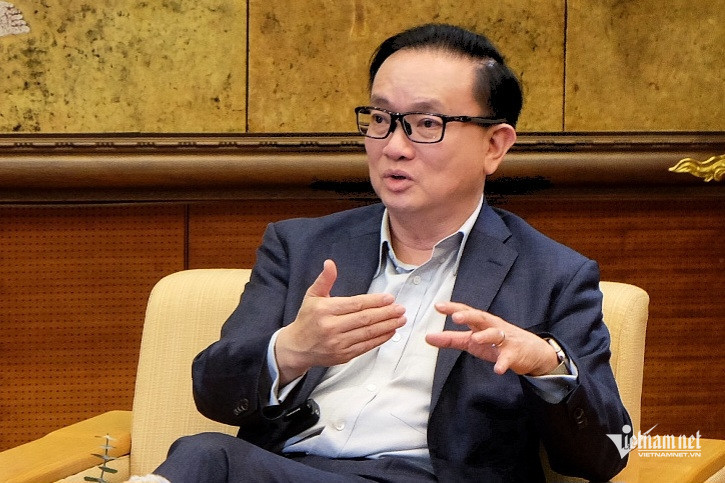
Dr. Nguyen, founder of the Computer Engineering department at Hong Kong University of Science and Technology, has 40 years of experience in technology.
He contributed to the development of Intel’s first flash memory transistor and previously served as Engineering Director for Google Apps.
At the 2025 International Conference on Artificial Intelligence and Semiconductors (AISC), Dr. Nguyen shared his insights on Vietnam’s approach to AI and semiconductors.
The convergence of AI and semiconductors
According to Dr. Nguyen, semiconductors were originally developed for memory, computing, and storage, not specifically for AI. However, their integration into machine learning, neural networks, and artificial intelligence has enabled breakthroughs such as ChatGPT and DeepSeek.
"The intersection of AI and semiconductors is not a coincidence but a technological inevitability. Semiconductors have enabled AI, and now AI is driving semiconductor innovation," he said.
For years, the U.S. has outsourced semiconductor production to Taiwan, but recent geopolitical risks have led Western nations to reclaim semiconductor manufacturing and invest heavily in the industry.
This shift presents a strategic opportunity for Vietnam. As countries seek to diversify supply chains and reduce dependence on a single supplier, Vietnam is emerging as a key alternative.
"Many investors tell me that this is a once-in-a-lifetime opportunity for Vietnam," Dr. Nguyen noted.
Vietnam’s 100-million-strong, young, and growing population contrasts with the aging populations of Japan, Taiwan, and South Korea, making it a promising location for high-tech investments.
Does Vietnam need massive funding to compete in AI and semiconductors?
Vietnam’s AI and semiconductor sectors are still in their infancy, but their growth potential is significant. Dr. Nguyen emphasized that investment flows follow opportunities, not just market size.
"If an opportunity exists, capital will flow in. If there’s no opportunity, investment will eventually dry up—regardless of the current market size," he explained.
In recent years, foreign investments in Vietnam’s semiconductor sector have increased, signaling strong interest and potential.
Vietnam’s strategic approach to AI and semiconductors
Dr. Nguyen suggests that Vietnam should capitalize on its unique strengths instead of following the same path as other nations. One promising opportunity is the development of Edge AI.
Rather than relying on massive cloud computing infrastructure, Vietnam could focus on integrating AI into edge devices such as automobiles, computers, and smart home gadgets.
"Developing AI for these devices is far more feasible for Vietnam. This is an opportunity that many countries have yet to fully recognize," he stated.
Additionally, Vietnam can design AI-focused semiconductors for edge computing, which requires significantly less capital investment than full-scale semiconductor fabrication.
Vietnam has already made strategic progress, and Dr. Nguyen encourages policymakers to build on these successes. He particularly noted the impact of Resolution 57, which outlines the country’s commitment to advancing its semiconductor and AI industries.
"I see a real sense of urgency and determination in Vietnam’s approach to technological development," he concluded.
Trong Dat